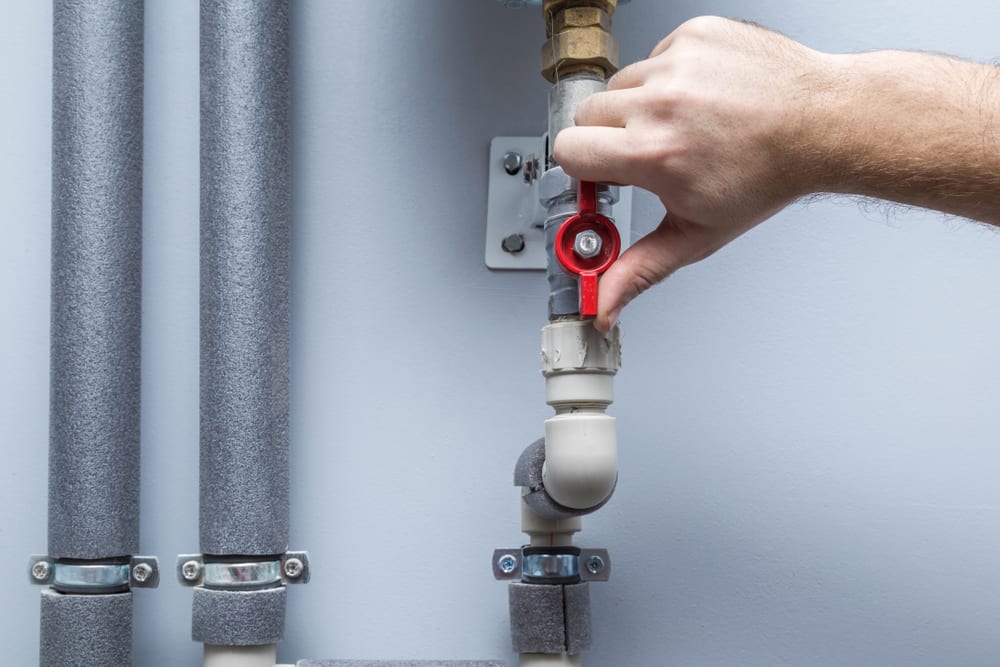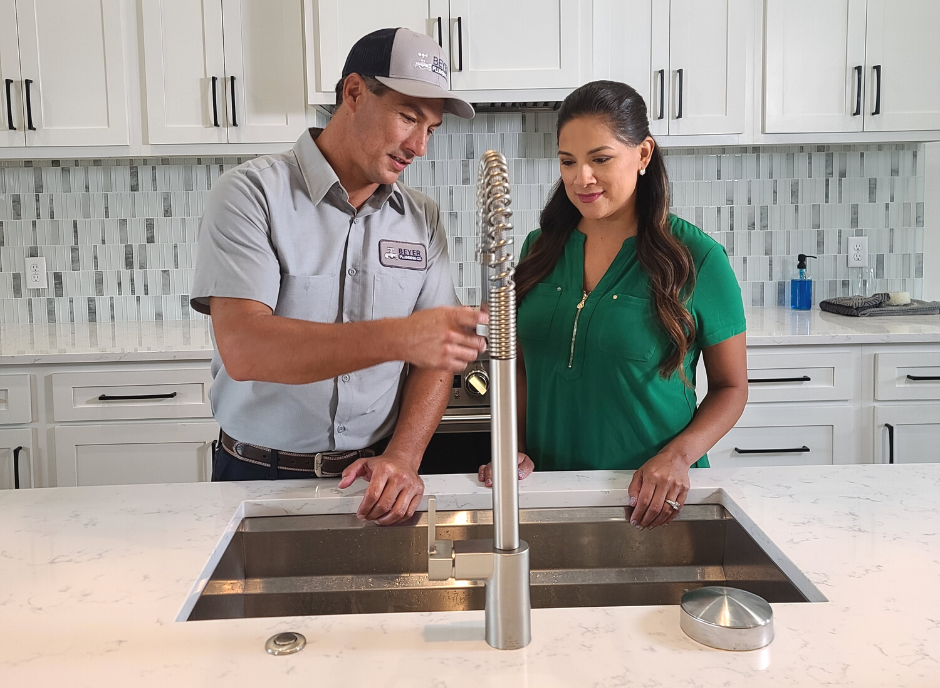We have come across this great article about Leaky Faucets: Why They Happen & What to Do About Them listed below on the web and figured it made perfect sense to talk about it with you in this article.

Trickling faucets could seem like a small inconvenience, however their effect surpasses simply the aggravation of the audio. From wasting water to sustaining unneeded financial costs and wellness risks, disregarding a dripping faucet can lead to different effects. In this write-up, we'll delve into why it's vital to resolve this common house issue promptly and successfully.
Wastefulness of Water
Ecological Impact
Leaking faucets add substantially to water wastefulness. According to the Epa (EPA), a single faucet leaking at one drip per secondly can lose greater than 3,000 gallons of water annually. This not just stress water resources yet also affects communities and wild animals depending on them.
Financial Costs
Raised Water Costs
Past the ecological effect, leaking taps can pump up water bills substantially. The accumulated wastefulness over time translates into greater energy costs, which might have been stayed clear of with timely fixings.
Prospective Residential Property Damages
Additionally, long term dripping can lead to damage to components and surfaces surrounding the tap. Water accumulation can create discoloration, rust, and also architectural concerns if left ignored, resulting in extra repair service costs.
Wellness Worries
Mold and Mildew Growth
The constant visibility of dampness from a leaking faucet produces an excellent atmosphere for mold and mildew development. These fungis not just endanger interior air quality yet additionally position wellness risks, particularly for people with respiratory conditions or allergies.
Waterborne Illness
Stagnant water in leaking faucets can become a breeding ground for bacteria and other pathogens, raising the danger of waterborne illness. Impurities such as Legionella microorganisms grow in stagnant water, possibly causing serious ailments when consumed or breathed in.
Do it yourself vs. Professional Fixing
Benefits and drawbacks of Do It Yourself Repair
While some may attempt to fix a leaking tap themselves, DIY fixings feature their own collection of obstacles. Without proper expertise and devices, DIY efforts can intensify the issue or result in insufficient repair services, extending the issue.
Benefits of Working With a Professional Plumber
Working with an expert plumber ensures that the underlying reason for the leaking faucet is attended to efficiently. Plumbing professionals possess the competence and devices to detect and repair faucet issues effectively, conserving time and reducing the danger of additional damage.
Step-by-Step Guide to Repairing a Dripping Faucet
Tools Required
Before trying to repair a trickling faucet, collect the needed tools, consisting of a flexible wrench, screwdrivers, substitute parts (such as washers or cartridges), and plumber's tape.
Common Tap Issues and Their Solutions
Identify the type of tap and the particular concern creating the drip. Common issues consist of worn-out washers, corroded valve seats, or malfunctioning O-rings. Describe manufacturer directions or on the internet tutorials for detailed advice on fixings.
Safety nets
Regular Maintenance Tips
To stop trickling faucets, carry out regular maintenance such as cleansing aerators, examining for leakages, and replacing damaged parts promptly. Additionally, take into consideration mounting water-saving gadgets or upgrading to much more effective fixtures.
Value of Prompt Repair Works
Attending to leaking faucets as quickly as they're noticed avoids further water wastage and prospective damages, eventually conserving both water and money over time.
Effect On Property Value
Assumption of Well-Maintained Property
Maintaining a building in good condition, including attending to upkeep issues like trickling taps, boosts its viewed worth and charm amongst prospective buyers or renters.
Influence on Resale Value
Characteristics with well-maintained plumbing components, including taps, command greater resale worths in the property market. Resolving leaking taps can contribute to a positive perception throughout home evaluations and settlements.
Ecological Obligation
Individual Contribution to Conservation
Taking duty for dealing with leaking taps aligns with broader efforts towards water preservation and environmental sustainability. Every individual's activities collectively make a significant influence on maintaining valuable sources.
Lasting Living Practices
By focusing on timely fixings and adopting water-saving behaviors, individuals contribute to sustainable living methods that benefit both existing and future generations.
Final thought
Dealing with a trickling tap exceeds simple convenience; it's a necessary action toward saving water, reducing monetary prices, and guarding health and property. Whether through do it yourself repair services or specialist support, acting to deal with leaking faucets is a small yet impactful means to promote responsible stewardship of sources and add to a much healthier, a lot more sustainable future.
How to Fix a Leaky Faucet: Step-by-Step Repair Guide
A leaky faucet may seem like a simple annoyance, but if it's not fixed promptly, that leak could cost hundreds to potentially thousands. From water damage to mold, mildew, and high water bills, even a tiny leak can be catastrophic if left unattended. Damage like this can even affect the overall value of your home, so it's important to take the right approach for leaky faucet repair. You may need the help of a plumber in some cases, but we've got a few tips you can try on how to fix a leaky faucet before calling the pros.
Four Faucet Types
When you're learning how to fix a leaky faucet, the first step is knowing what kind of faucet you're working with! There are four common types.
Cartridge Faucets
Cartridge faucets come in one- or two-handled varieties. In one-handled cartridge faucets, hot and cold water combines in a single cartridge. In the two-handled versions, hot and cold water are controlled separately and mixed in the faucet.
Ball Faucets
Ball faucets have a single lever you push up and down to adjust the pressure and rotate to change the temperature. A slotted metal ball controls the amount of water allowed into the spout.
Compression Washer Faucets
They're the oldest type of faucet, but they're still used in many homes — especially older ones. Compression faucets have two separate handles that, when turned, raise or lower the washer that seals a water valve. This valve stops water from flowing through the faucet when it is turned off.
Disc Faucets
Disc faucets rarely need to be repaired due to their maintenance-free design. The water flow is controlled by two discs — the upper one raises and lowers against a fixed lower disc, creating a watertight seal. If your disc faucet starts leaking, you may need to replace the seals or clean residue buildup from the inlets.
Fixing a Leaky Faucet
Step 1: Turn Off the Water
Whether you're learning how to fix a leaky bathtub faucet or how to fix a leaky kitchen faucet, always turn off the water supply to your working area when you're fixing a leak. The last thing you want is a flood added to your list of things to fix.
Look for the shutoff valves below your sink or around the tub and turn them clockwise to stop the water flow. If your faucet doesn't have shutoff valves, you may need to turn off the water for the whole house. Check to make sure it's off by turning the faucet on. If nothing comes out, you're ready to start the repair.
Step 2: Take Apart the Faucet
How you disassemble your faucet depends on the type of fixture you have. You can use a flathead screwdriver to remove the caps on top of the handle or handles for cartridge and compression faucets. Inside, you should see handle screws. Unscrew these with a screwdriver to remove the handle.
Disc- and ball-style faucets will typically have an inlet screw near the handle, and removing that will reveal the interior of the faucet.
Detach the Valve Stem
For cartridge- and compression-style faucets, you'll see the inner valve stem or cartridge once you remove the faucet handles. If you have a compression faucet, unscrew the brass valve stem. If you have a cartridge faucet, pull out the cartridge. If your cartridge has been in place for a while, it may require some tools or extra force to remove it due to mineral deposits.
Examine and Replace Parts
Once you've removed the parts, check them out to confirm what needs to be replaced. You may see corroded rubber washers, O-rings, stems, or cartridges. On a ball-style faucet, check the seats and springs for damage.
If you need to repair a leaky disc faucet, check the inlet and seals on the lower disc.
Once you determine what parts must be replaced, visit your local hardware store. Bring the damaged parts with you to ensure you can purchase the correct components to replace them.
Clean Valves and Faucet Cavity
If you've removed a stem or cartridge, you may notice mineral buildup in the faucet's threads. Use white vinegar to clean the valve seat by soaking it for a few minutes, then scrub it away with a soft toothbrush and rinse with warm water. You can also clean the interior of the faucet in the same way.
Reassemble the Faucet
Once your faucet is cleaned and the required parts have been replaced, it's time to reassemble it. Put the pieces back together and slowly turn the water supply back on. Doing this slowly is crucial because too much initial water pressure can damage the new hardware you've just installed.
https://homewarranty.firstam.com/blog/how-to-fix-leaky-faucet

I'm very involved in Why Are My Faucets Dripping (And Can I Fix It Myself)? and I hope you enjoyed my blog posting. Enjoyed reading our article? Please quickly share it. Let another person locate it. I praise you for your time. Return soon.
Comments on “The Factors Behind Fixing a Leaking Faucet”